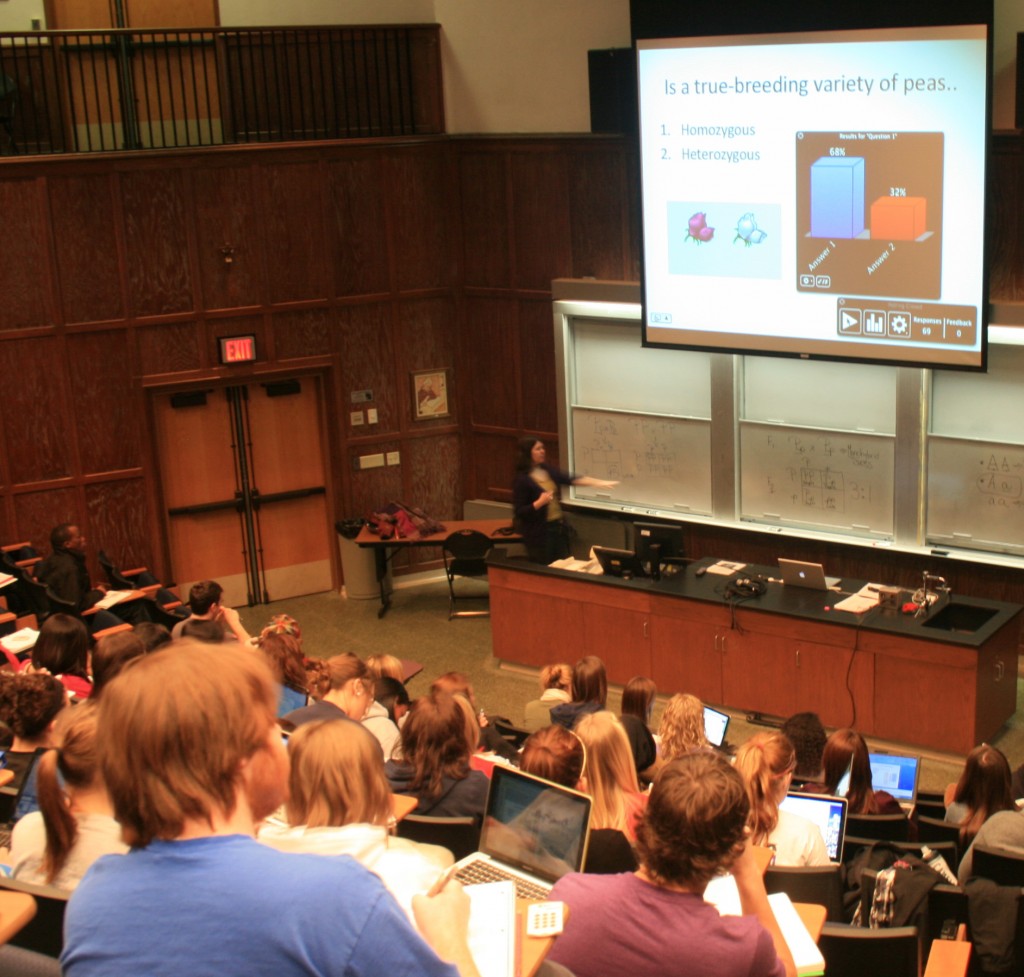Some professors are using interactive technology to help students become more engaged in class.
These forms of technology include smartphone applications, clickers and polling software.
“Smartphones are an added convenience in the classroom if done properly,” chemistry professor Mithra Marcus said.

Biology professor Susan Chaplin uses a site called polleverywhere.com with her upper-level classes, which lets students send a text message to the website and receive an instant graph on their phones.
Philosophy professor Jonathan Stoltz said he discovered an application called Response Ware, which lets students respond to multiple-choice questions using their mobile phones and computers.
Most applications are fairly cheap, Stoltz said, but staff and students would have to pay for licenses and have Wi-Fi-accessible classrooms to use them. A Response Ware classroom license costs $15.
In comparison, handheld clickers currently used in classrooms and labs cost about $30.
Clickers in the classroom
Marcus said she uses clickers to increase class participation. Clickers create immediate polling results in classrooms. Students type answers to multiple-choice questions on miniature keyboards and once polling ends, results are displayed in PowerPoint graphs.
“I think it gives people who wouldn’t feel comfortable talking in class a chance to participate,” she said.
In November 2010, a half-million students were using clickers across several thousand campuses, according to the New York Times.
St. Thomas began using Turning Technologies clickers in the philosophy department in 2007, and Turning Technologies now provides all the clickers available to St. Thomas classes, Stoltz said.
Technology allows instant feedback
Chaplin uses clickers in her class to help clarify questions for students. If a student has a question, she re-polls the student individually, which gives students an opportunity to see mistakes and ask follow-up questions.
Clickers allow students to compare themselves to the class without jeopardizing their grades, Marcus said.
Freshman Daphne Welter said she thought the anonymity was a nice feature.
“They are really useful in [chemistry] review sessions,” Welter added.
Freshman Rebecca Kummer said she likes clickers because they hold her accountable in class and she gets points for being an attentive student.
Stoltz uses clickers for review and discussion purposes.
“It does get students more into the material, and with certain kinds of questions, it does make class discussions much easier,” he said.
Freshman Danielle Francen said she sees clickers as “a great learning tool.”
Technology available, but not widely accessible
While Stoltz sees the benefits of smartphone apps, he said it will take time before a product such as Response Ware is implemented in classrooms. When he asked his 120-student philosophy class who owned an iPad, only one student owned one.
“I couldn’t see myself using this in the near future, because there isn’t universal applicability or availability of these mobile devices,” he said.
Kummer agreed that it will be a while before classes begin to frequently use smartphone applications.
“Right now, everyone doesn’t have [a smartphone or laptop], so clickers are better,” Kummer said.
Kelsey Broadwell can be reached at broa3324@stthomas.edu.

